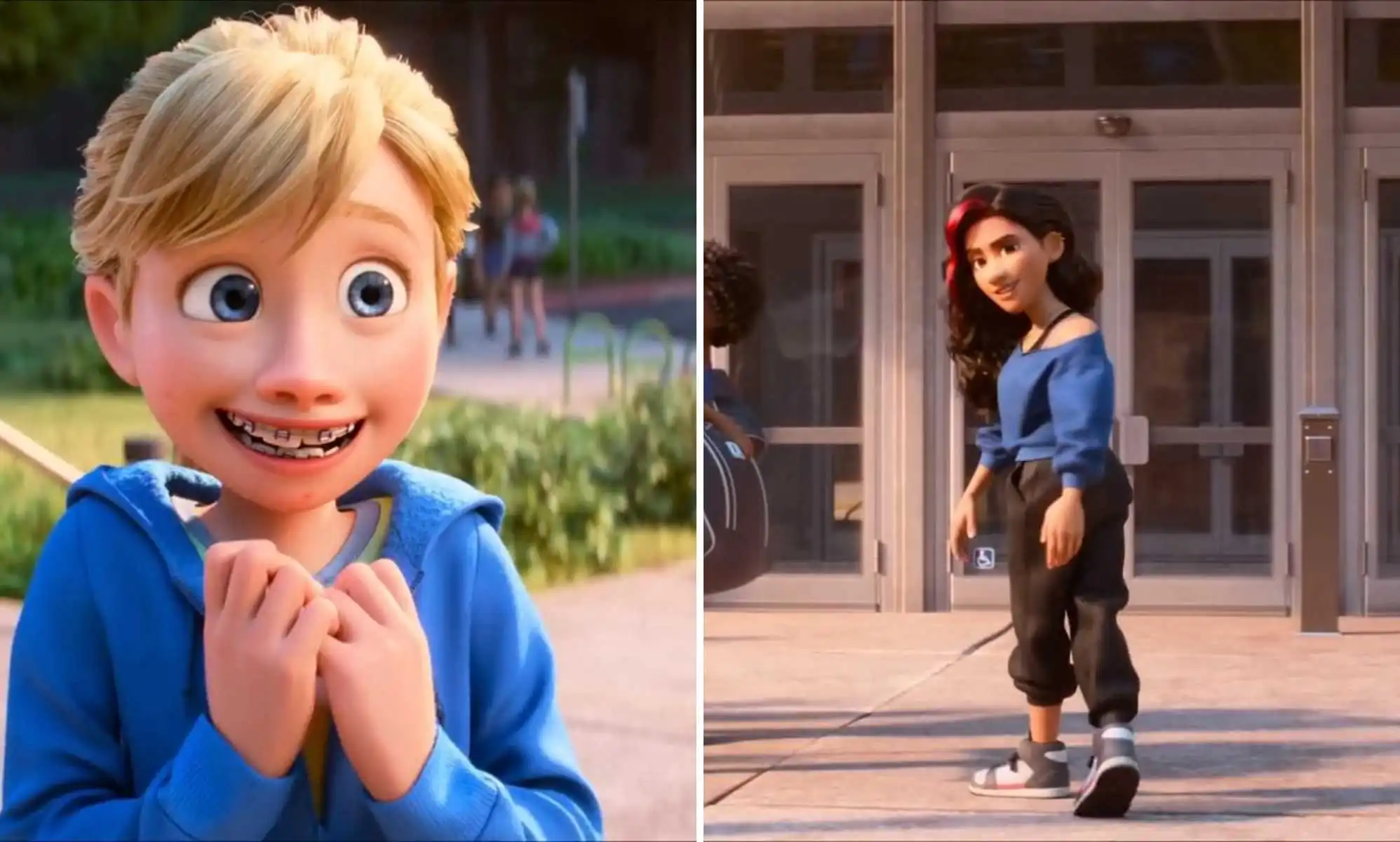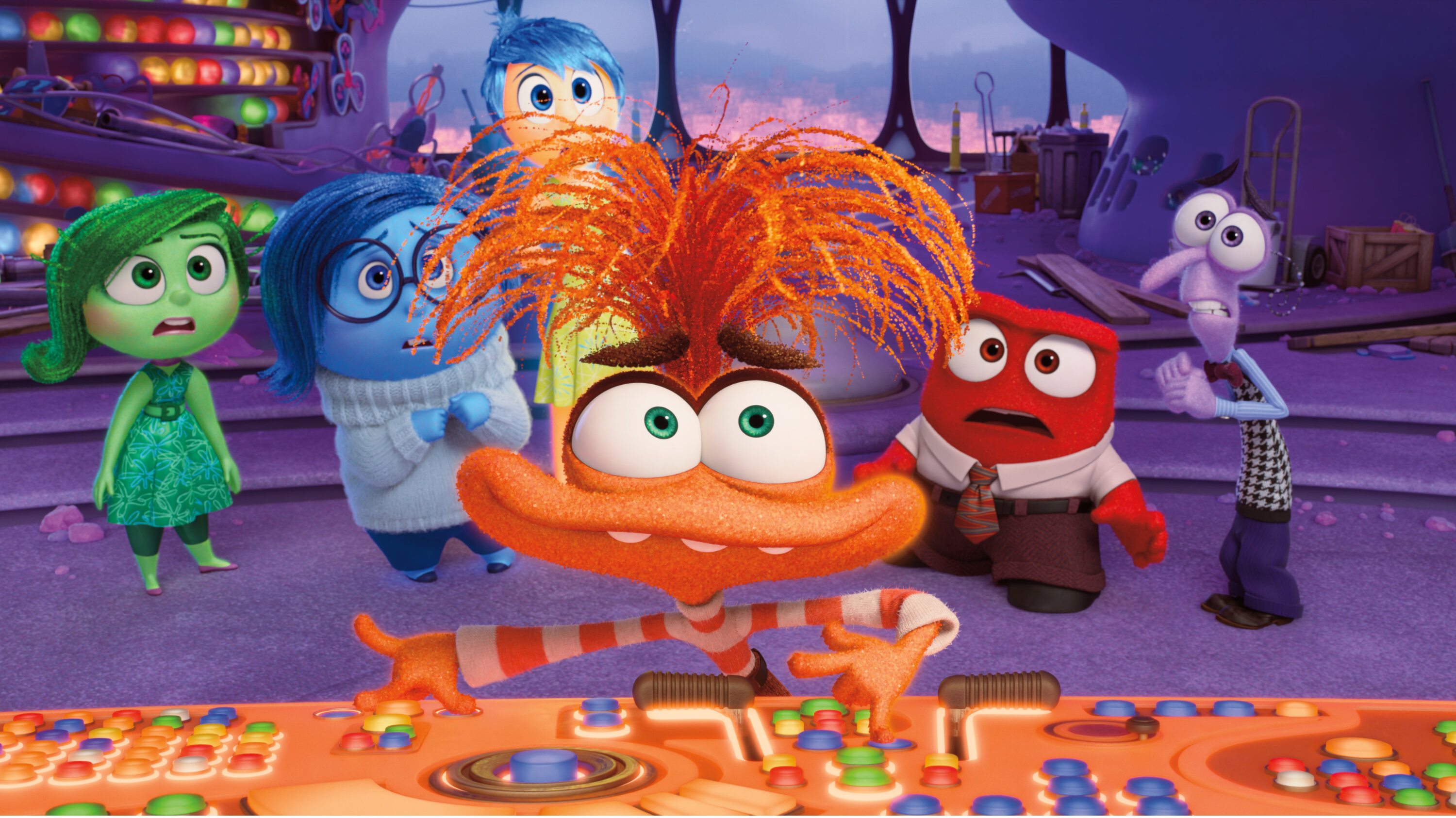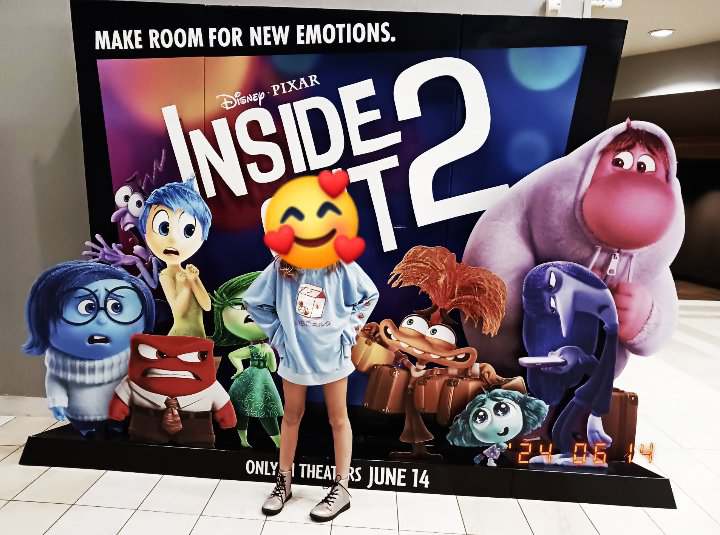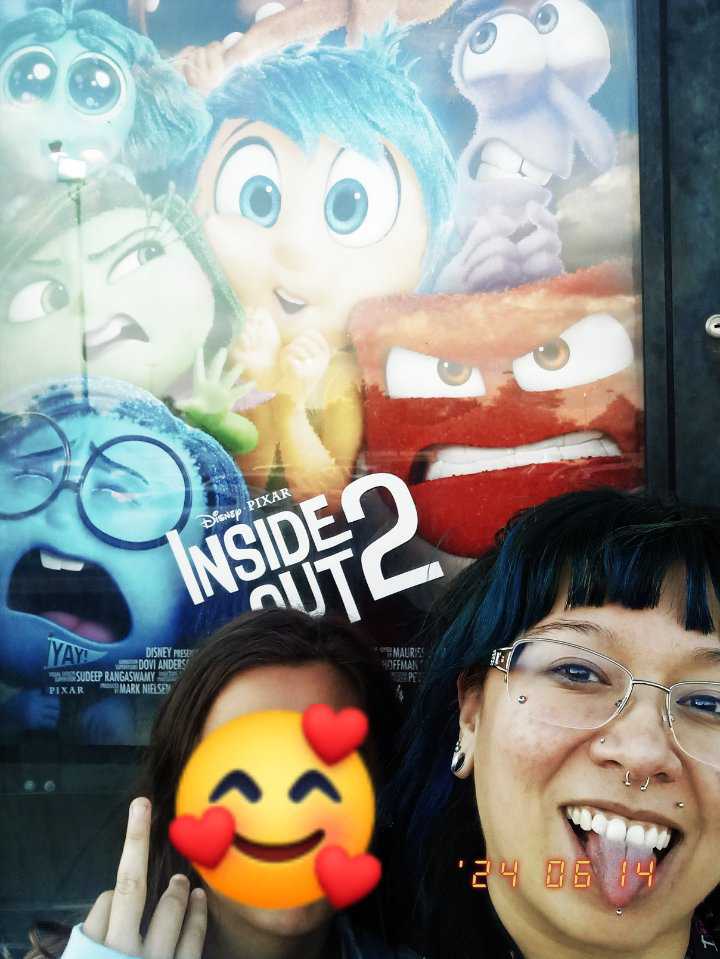I saw Inside Out 2 and now I take antipsychotics!
Sunday, June 23rd, 2024, 16:49
Mood:  Sore
Sore
Warning: this post will have lots of spoilers for Inside Out 2. Do not read this post if you have not seen Inside Out 2 yet.
The title of this post is a great example of how clever editing can make you feel like two things are related when they're not. Except, actually, the two are kind of related. Okay, fine, Inside Out 2 wasn't so terrible that merely sitting through two hours of it required me to undergo psychiatric treatment--in fact, unlike what critics said before opening weekend, it wasn't terrible at all--but it did hit me pretty hard given the things I do require psychiatric treatment for.
I've never been shy about disclosing my mental health problems: not my diagnoses, not my symptoms or medications, nothing. The reality is that, for most people, self-disclosure still poses a big risk. A child custody battle, judgmental employment situation, or unsupportive family culture might prevent people from disclosing the way I do. I therefore feel obligated to talk about my mental health in a public forum not for my own sake, or at least just for my own sake, but because so many of us struggle with our mental health and are, somehow in 2024, still forced into secrecy about it.
This is perhaps compounded by the archetype of the mentally ill character as "The Other" in some capacity in media. House from House. Russell Crowe's schizophrenic John Nash, Jr. in A Beautiful Mind. (Um, duh, I know John Nash, Jr. was a real person. Thanks.) And while we're on that subject, we also can't seem to just let real-life mentally ill artists, creatives, and otherwise Very Productive People be mentally ill without insisting that their madness begets their greatness: Kurt Cobain, Vincent Van Gogh, Hemingway and Woolf and Plath and, yes, the real life John Nash, Jr. We insist that these people were so creative and clever because their broken brains made them that way when, and I can say this from experience, they would've been almost certainly more productive had they spent less time warring with themselves internally. (At the very least, they would've been happier, and their lives longer.)
In the media, mentally ill people aren't allowed to just be people. We have to justify the bad parts of ourselves by making the good parts of ourselves exceptional. Otherwise, what's the point of us?
Riley is, at her core, an unexceptional and happy teenage girl. She has kind friends, one of whom she made because the other kids at her junior high were making fun of her. She enjoys video games, playing guitar, and hockey: a beloved pastime imported from her home state of Minnesota. When Riley is selected with her friends to attend a weekend-long hockey clinic, where she will meet none other than local hockey high school hero Val Ortiz, she has to choose between maintaining the person she's been, and becoming the person she wants to be--with both coming at great personal cost.
Internally, Riley has grown accustomed to a very stable sense of self--she believes she's a good person--and five core emotions: Joy, Sadness, Fear, Anger, and Disgust. However, as she gets older, she grows four new core emotions: Ennui, or total, dissociating boredom; Envy, who helps her key in on all the stuff the other kids have that she should, too; Embarrassment, who helps to save her from doing the things she really shouldn't do in front of the other kids; and, the star of the show, Anxiety, who takes it upon herself to helm the Console and lead Riley to victory. As Anxiety consumes Riley, driving her deeper and deeper into an obsession with joining Val's hockey team, she loses more and more of herself to her new obsession: that she is not good enough.
Here's a short list of times when I cried watching Inside Out 2:
I cried just during the opening credits, because this was my and The Country Brat's favorite movie when she was a toddler, and now she is a tween and I... have plants and wear Birkenstocks? (Nope, it is too early for me to use the "O" word to describe myself!)
In one key moment, Joy uncovers a secret room where dozens of mind workers have been tasked with creating worst case scenarios for Anxiety to show Riley, which is supposed to have the effect of motivating her to try her best. All it really does is torture Riley, and Joy liberates the mind workers from Anxiety's clutches. I thought of how, in my own mind, I have these mind workers going on 24/7. One of my most paralyzing symptoms of my mental illness is extremely loud and constant intrusive thoughts. I have imagined every single possible worst case scenario that robs me of any ability to enjoy my life. If there is something in the world that The Country Brat can die of, I have thought of it. My imagination runs so wild with it that it almost seems like a virtual reality helmet. This is just my day-in, day-out. (I am, hence, on antipsychotics now. Told you that'd eventually come up again. Since I don't have any joy to shut down the mind workers creating monster movies in my head, stuff out of a bottle will do just fine.)
Finally, in one particularly difficult monologue, Joy reflects, "Maybe this is what happens when you grow up. You feel less joy." Tears quietly streamed down my face hearing this, as someone who has suffered with mental illness beginning in early childhood. I did not get to experience a childhood in which I was happy, because of my poor mental health. My earliest symptoms of mental illness appeared at the age of three, when I began forcing myself to stay awake for long periods of time, afraid that my absence would trigger an international party; I became concerned that I was so abhorrent and unlikable that everyone would celebrate a world without me in it. I did not feel less joy as I grew older, because I can't remember really having ever consistently felt joyful in my life.
On the flip side of this, when I was 20, I produced a daughter who is, as far as we can tell, happily free of mental illness. She has been diagnosed with ADHD, but does not suffer with the organic mental illnesses--the mood, personality, and anxiety disorders--that plague my father's side of the family and myself. The Country Brat was able to watch Inside Out 2 with me and relate to it on a more calming and common level. She understood Riley's self-doubts and fears, and her transformation from a stable, childlike sense of self to one that's more nuanced and mature; The Country Brat is going through the same thing herself.
What The Country Brat particularly enjoyed about the movie was the room for discussion it opened up for us. We discussed the ways in which our economic system fosters anxiety and envy, by cultivating a world in which we Always Gotta Have the latest stuff. The Country Brat noted how good it is for American families particularly to have a family movie as deep as Inside Out 2 to watch and talk about these things, because so often our culture encourages us to shut such discussions down.
I can't recommend Inside Out 2 and its predecessor, the first Inside Out, enough to all families, because it's just such a great jumping off point to discuss your feelings. However, for families like ours in which one or more key members suffers with mental illness, this is a particularly excellent movie for navigating those challenges together as a family.



